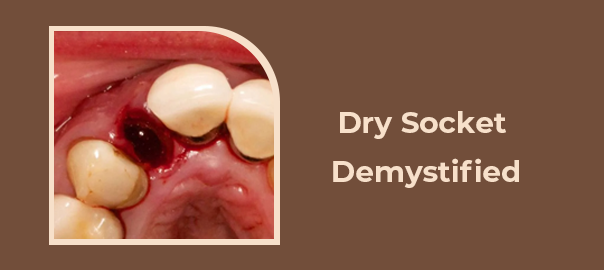
Dry Sockets Demystified: Understanding the Connection to Tooth Extraction
When it comes to dental procedures, particularly tooth extractions, the term “dry socket” can strike fear into the hearts of many. It’s often associated with intense pain and complications following a seemingly routine dental extraction. But what exactly is a dry socket, and why does it occur? Let’s delve into the intricacies of this dental phenomenon to gain a better understanding.
What is a Dry Socket?
A dry socket, clinically known as alveolar osteitis, is a painful condition that can occur after a tooth extraction. Typically, after a tooth is removed, a blood clot forms in the socket to protect the underlying bone and nerves as the healing process begins. However, in cases of dry socket, this blood clot either fails to form properly or becomes dislodged prematurely, exposing the underlying bone and nerves.
Understanding the Risks
The absence of a protective blood clot exposes the bone and nerves in the socket, leading to various uncomfortable symptoms and potential complications. Some of the risks associated with dry sockets include:
- 1. Severe Pain: Dry sockets are notorious for causing intense, throbbing pain that can radiate to the jaw, ear, and even the temple.
- 2. Delayed Healing: Without the protective barrier of the blood clot, the healing process can be significantly delayed, prolonging discomfort and increasing the risk of infection.
- 3. Increased Risk of Infection: The exposed bone and tissue make the socket more susceptible to bacterial infection, further exacerbating pain and hindering healing.
- 4. Malodor and Taste Disturbance: Patients with dry sockets often report foul breath and a persistent unpleasant taste in their mouths because of the exposed bone and tissues.
Treatment for Dry Sockets
Fortunately, dry sockets can be effectively treated by a dental professional. Treatment typically involves cleaning the socket to remove debris, applying medicated dressings or pastes to promote healing and alleviate pain, and sometimes prescribing oral antibiotics to prevent or treat infection.
Promoting Healthy Socket Healing
While the occurrence of dry sockets cannot always be predicted or prevented, some steps can be taken to promote optimal healing after a tooth extraction:
- 1. Follow Post-Extraction Instructions: It’s crucial to follow your dentist’s instructions carefully, including avoiding strenuous activities, rinsing with saltwater as directed, and refraining from smoking or using straws, which can dislodge the blood clot.
- 2. Maintain Good Oral Hygiene: Keeping the extraction site clean is essential for preventing infection and promoting healing. Be gentle when brushing and flossing around the area to avoid disrupting the healing process.
- 3. Attend Follow-Up Appointments: Regular follow-up appointments with your dentist allow them to monitor your healing progress and address any concerns promptly.
- 4. Avoid Disruptive Behaviors: Certain habits, such as smoking or consuming alcohol, can impede the healing process and increase the risk of complications. It’s best to avoid these behaviors, especially in the days immediately following a tooth extraction.
Conclusion
In conclusion, while dry sockets can be a painful and frustrating complication of tooth extraction, understanding the causes and risks can help demystify this condition. Following proper post-extraction care instructions and seeking prompt treatment if symptoms arise can help minimize the likelihood of developing a dry socket and promote optimal healing for a healthy mouth. If you’re experiencing severe or prolonged pain after a tooth extraction, don’t hesitate to contact your dentist for evaluation and treatment. Your oral health and comfort are worth it!
DISCLAIMER:Please note that the prices mentioned on this page: (a) present a range (depending upon the severity of the dental condition, the technology used in treatment, type of dental products used, etc.); (b) are true as on the date of this page and may change on a later date, in accordance with the standard company policy; (c) may be subject to standard aberrations or generalizations on account of the use of AI in general Google/internet search by you.Leave a Reply
Leave a Reply
Explore More Similar Posts
Explore More Blogs


Leave a Reply